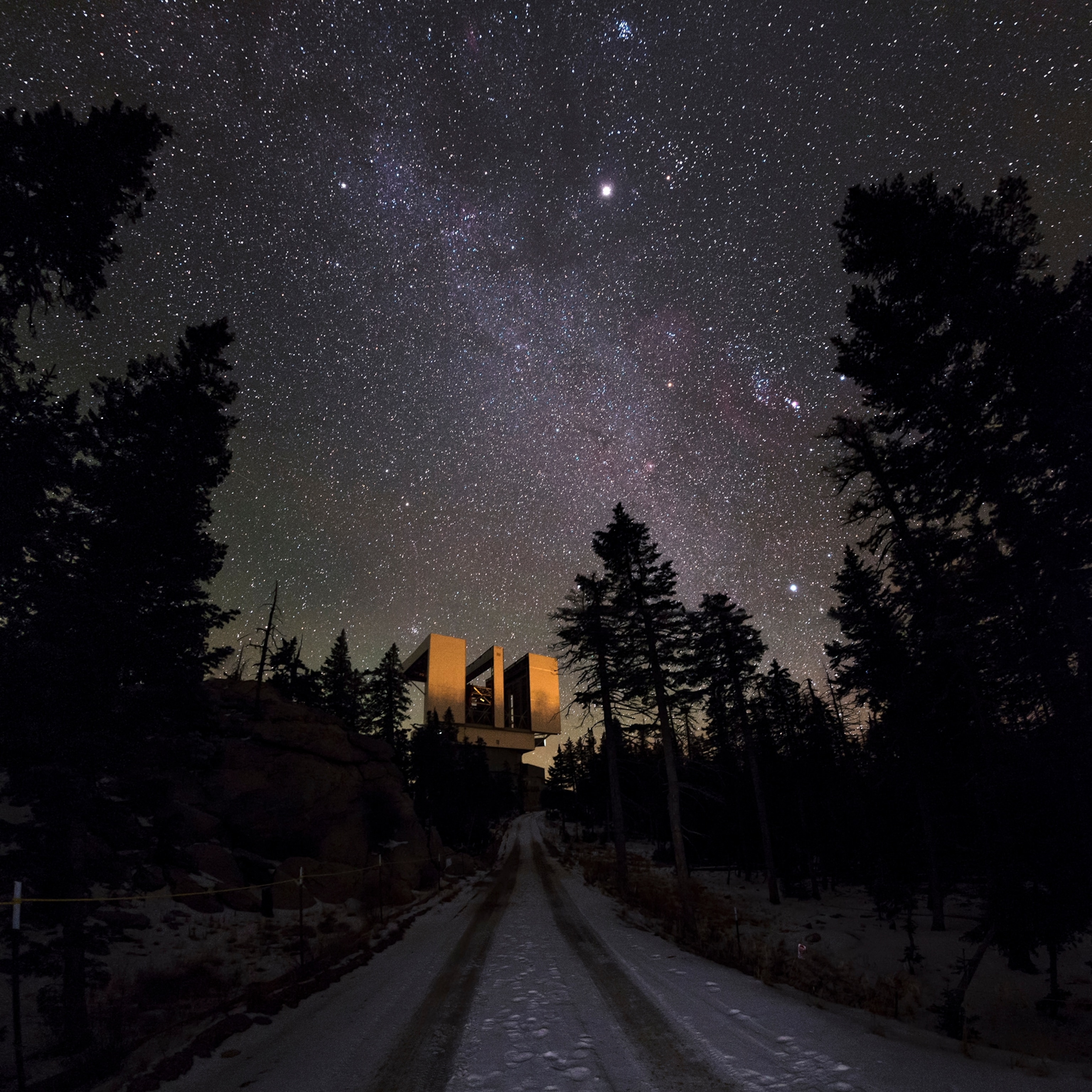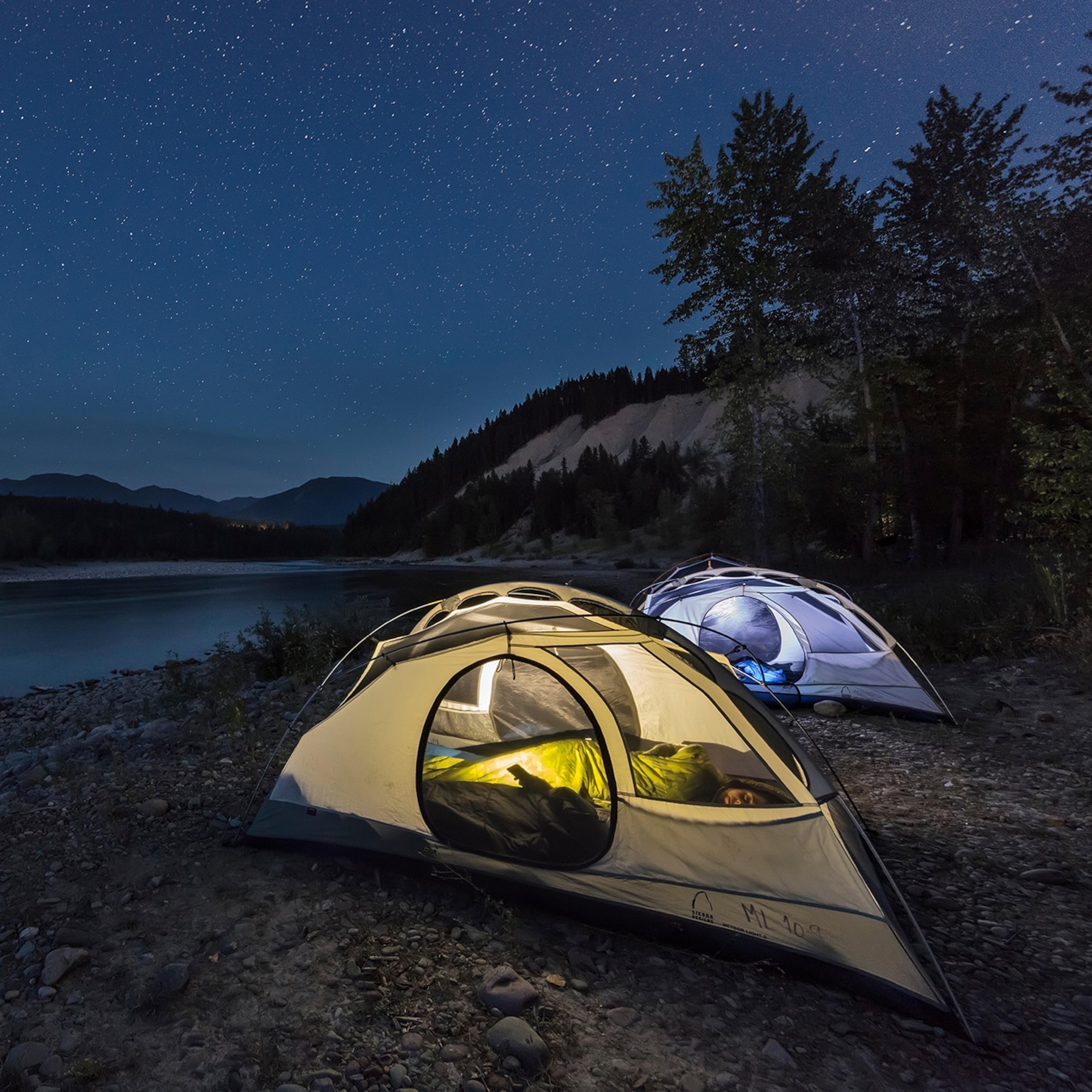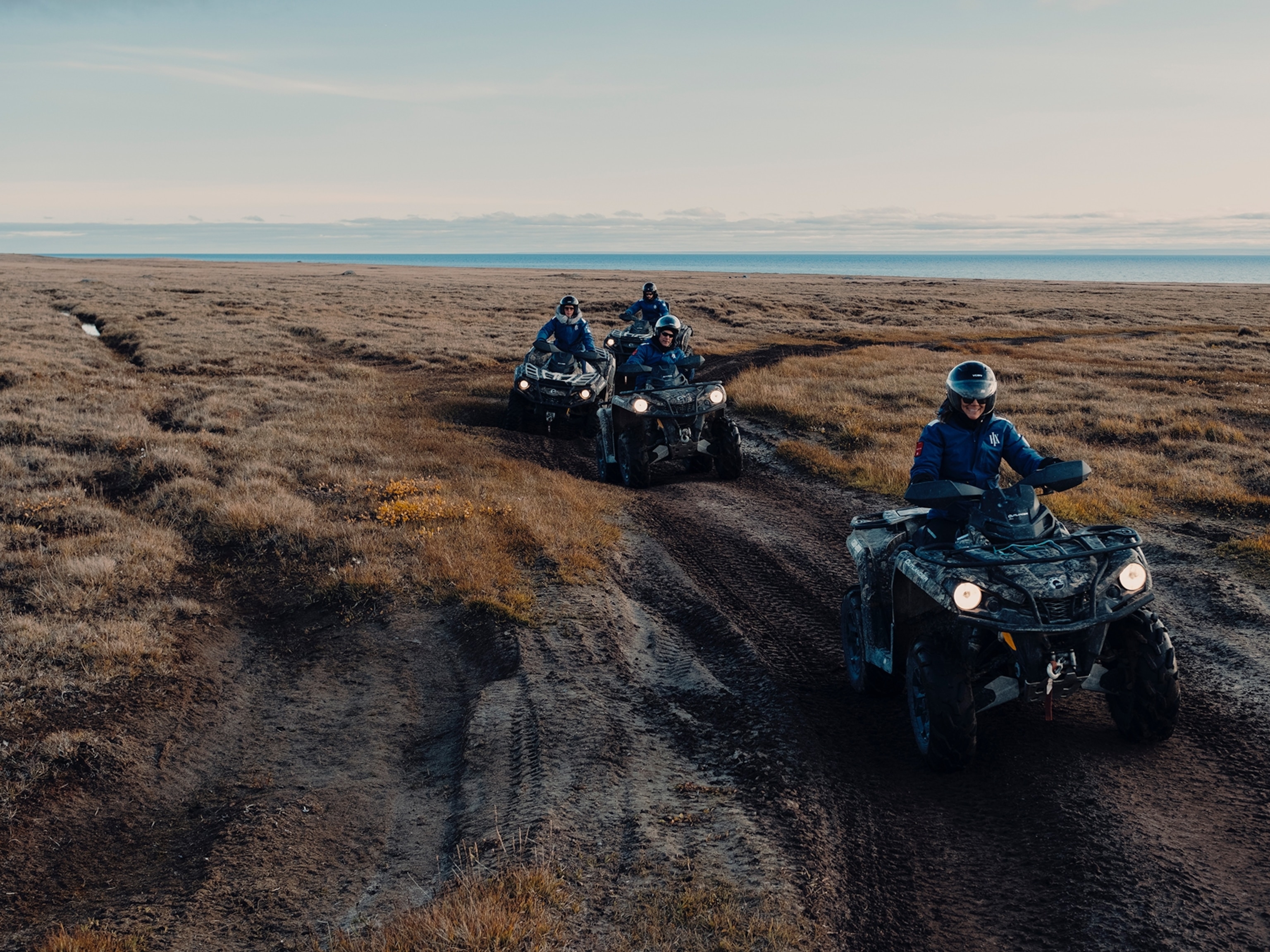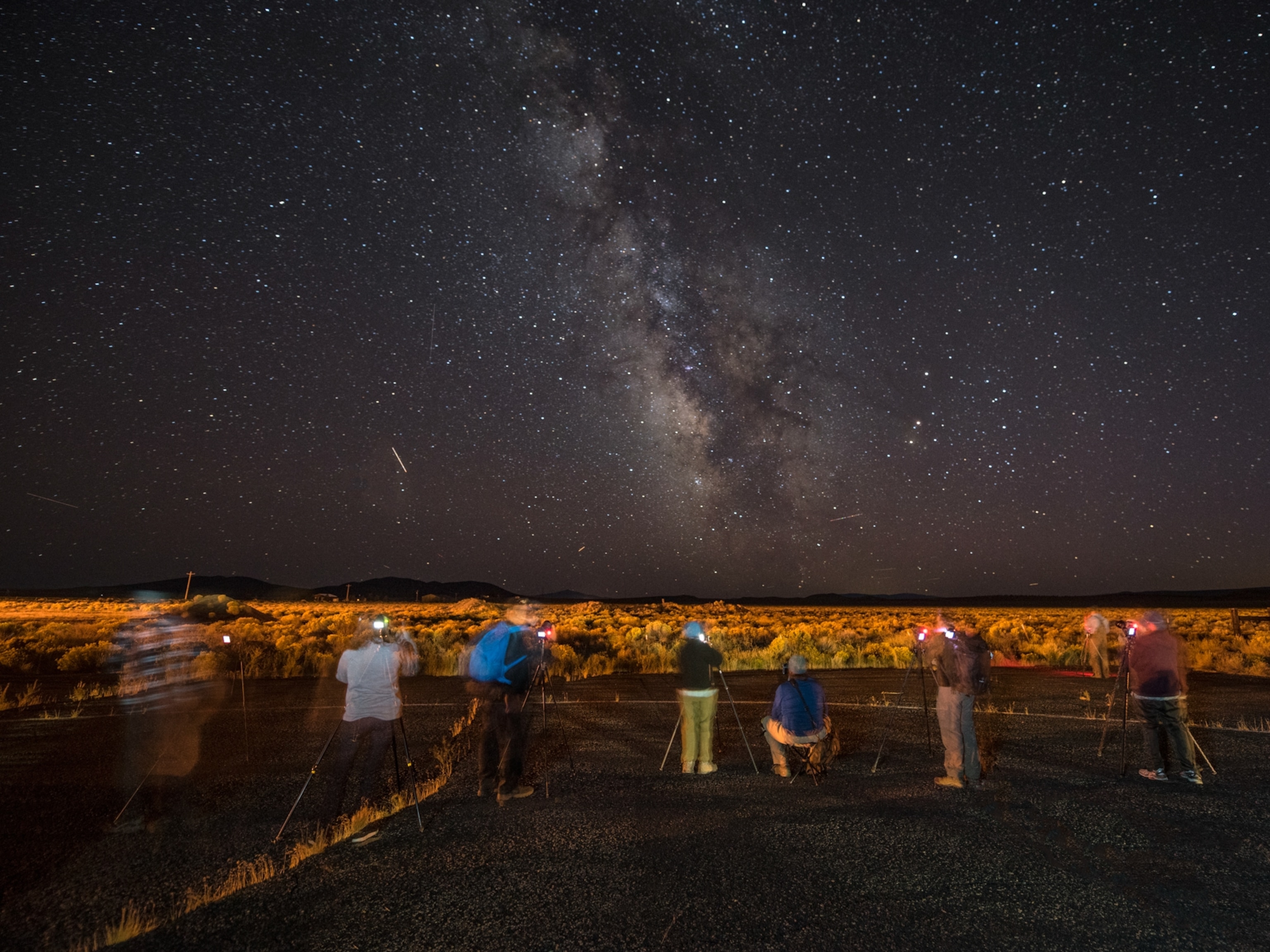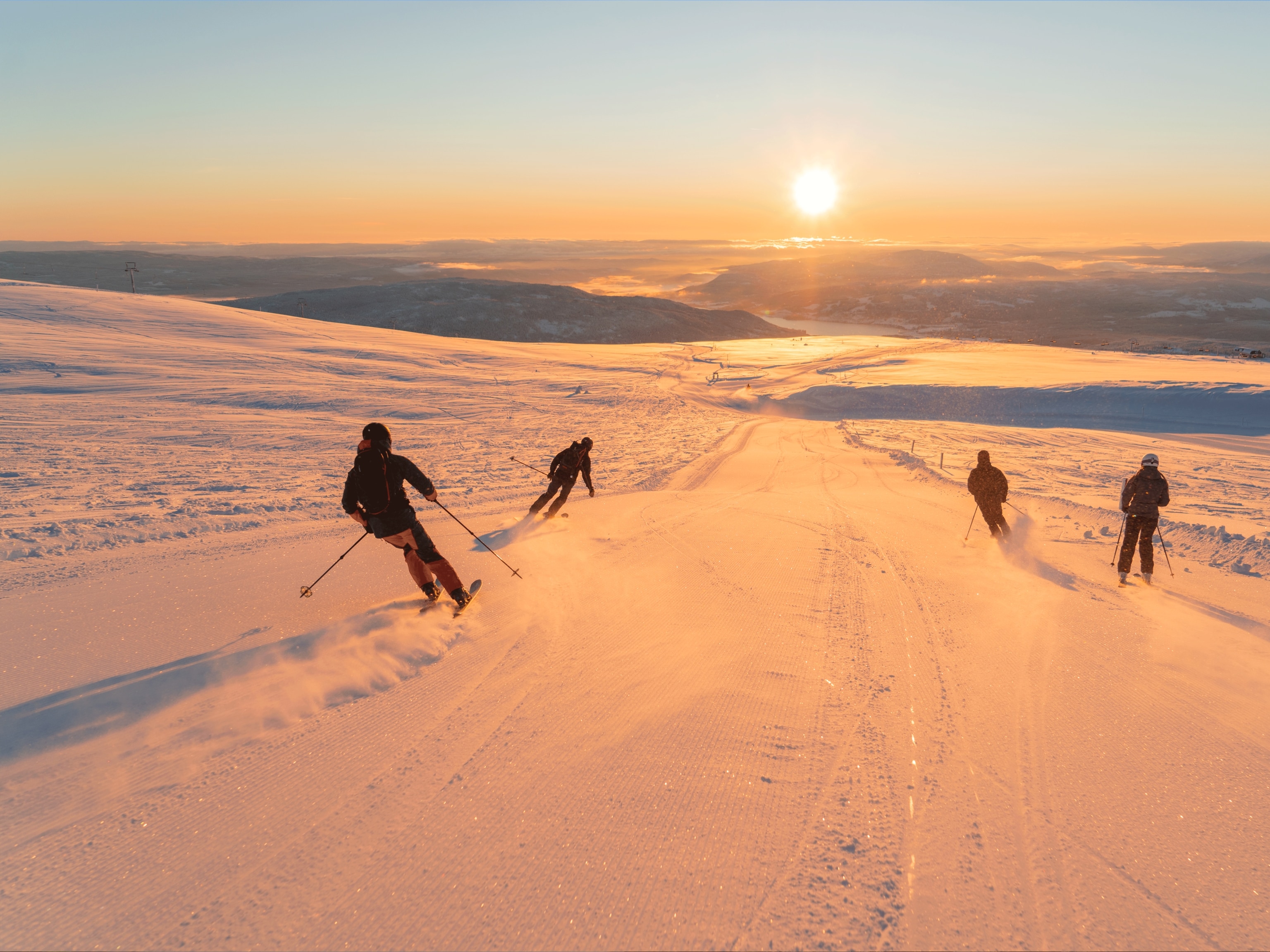
Why travellers are embracing dark sky tourism for 2022
Looking to the skies for answers to the big questions can be a life-affirming experience. But it isn’t all just stargazing — some of the planet’s best dark-sky destinations offer activities and experiences that bring the cosmos to life.
Somewhere in the cosmic void between Mars and Jupiter, around 111 million miles from Earth, there floats a hulking, rocky lump named Vesta. It’s one of the largest bodies in the asteroid belt, with a surface area the size of a small moon and temperatures that drop to -200C. Back down on Earth, it’s 2am, I’m in a warm room on a dark hilltop in Northumberland, and a sliced fragment of Vesta is resting in my palm.
“I love space rocks,” says Ellie Macdonald, one of the science communicators at Kielder Observatory, encouraging me to study the interplanetary interloper under a microscope. “They’re the most tangible form of astronomy.” On the table around us are other long-distance travellers — little chunks of the lunar surface, and even Mars — all of which have arrived here in meteorite form. They represent not so much a collection of high-value rocks as a kind of solar system reunion.
A few minutes later, we’re standing outside, where the dead-of-night clouds have rolled back to reveal a shimmering, psychedelic universe of pinprick stars. Directly above us is the unfathomable vastness of the Milky Way, a glowing cosmic highway furled across the night sky. Ellie’s colleague, Liam Reid, gives the sight some context. “So, our sun is one of 300 billion stars,” he says, as my mind does loop-the-loops. “And that’s just in our galaxy alone. There are three trillion other galaxies.”
In many ways, Kielder Observatory is quite the trip. It sits at the top of a two-mile dirt track on the edge of Kielder itself, one of England’s most remote villages. As such, the observatory is not only off-grid — think log-burners, compost toilets and solar and wind power — but surrounded by darkness. Proper, where-did-I-drop-that-glove darkness. On the right night in an urban park, you might be able to pick out a few constellations overhead. Here, by contrast, the heavens are absolutely smothered in stellar specks, to the point where what you’re looking at becomes almost more stars than sky. To say it’s breathtaking is no exaggeration.
Dark sky tourism is no longer a niche sector. In our screen-led age, increasing numbers of us are recognising stargazing as a chance to reconnect to something deep and magical: a travel experience that puts existential awe above Instagram likes. Northumberland is home to the UK’s first, and biggest, Dark Sky Park (Northumberland National Park and neighbouring Kielder Water and Forest Park). With a combined 580 sq miles, it’s Europe’s second-largest protected night-sky area and earns the county an estimated £25m a year in ‘astro tourism’ revenue. It offers expert-run observatories, dedicated events and even stargazing accommodation packages.
And it’s not the only one; the US-based International Dark-Sky Association has designated 16 UK Dark Sky Places (plus the Channel Island of Sark) as prime stargazing locations, among them Bodmin Moor, Snowdonia, the North York Moors, Coll (an island in the Inner Hebrides of Scotland) and, most recently, North Ronaldsay, in the remote Orkney Islands. Most are either Dark Sky Parks (with exceptional starry nights and a protected nocturnal environment) or Dark Sky Reserves (as above but concentrated on a more compact core zone). On top of this, there are more than 200 smaller Dark Sky Discovery Sites across the country — so if you’re keen to stare agog at our celestial neighbours, you’ve got options. On a clear night, and in the darkest parts of the UK, it’s even possible to pick out Andromeda with the naked eye. That’s the galaxy next door, a mere 2.5 million light years away.
Dark sky tourism — which can involve anything from sitting outside with a thermos to making a formal observatory visit — relies on places with a lack of man-made light pollution. This is more of an issue than might be assumed. Back in 2016, a report in open-access journal Science Advances found that 80% of the world’s population lives under light-polluted skies, while a hefty 99% of people in Europe and the US live under skies nearly 10% brighter than their natural starry state.
The UK Dark Skies Partnership, which includes all 16 UK Dark Sky Places, not only champions a fuller understanding of the cosmos but acts as a de facto conservation body by promoting things such as low-glare, energy-efficient bulbs, and exterior lighting that directs downwards. “Light pollution has a major impact not just on wildlife and plants but also on our health and wellbeing,” says Duncan Wise, of the Northumberland National Park Authority. We’ve met at The Sill, a visitor centre in the shadow of Hadrian’s Wall, where it’s fun to imagine chilly centurions looking up at the planets 2,000 years ago. “Among other things, so much light can knock out our circadian rhythms,” he continues. “The good news is that light pollution is reversible in a way that air or water pollution isn’t.”
Duncan was part of the team that was instrumental in helping Northumberland National Park and Kielder Water and Forest Park together achieve Dark Sky Park status in 2013, and he explains that there’s a refreshing amount of collaboration between destinations. “Galloway Forest Park became the UK’s first Dark Sky Park in 2009, and they really helped us,” he says. “So, in turn we’ve helped places like the South Downs and Snowdonia to get their own Dark Sky designations. It’s in everyone’s interest; the sense of wonder that can be had from a starry night is mind-blowing.”
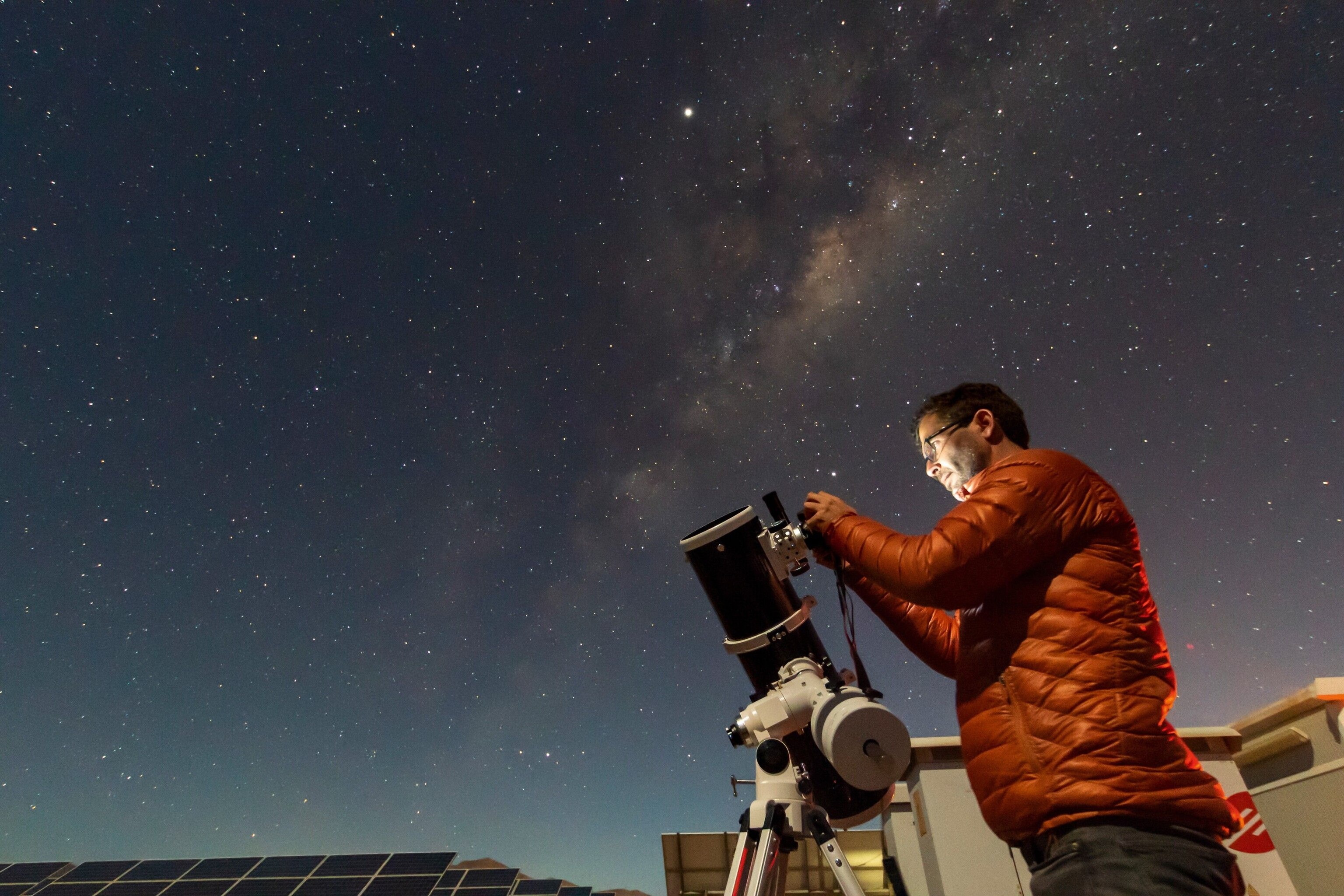
Interstellar intel
A star-studded sky may be mind-blowing, but to fully appreciate what you’re looking at, it pays to be in the company of those in the know. A star cluster becomes more than a star cluster when you’re with someone who lives and breathes astrophysics — and they tend to have powerful telescopes, too. Across the UK and the Channel Islands, there are around 100 observatories although Ayrshire’s excellent Scottish Dark Sky Observatory was sadly gutted by fire in mid-2021. Many of these grant public access through ticketed events. I attend three on my visit to Northumberland: one at the small but compelling Battlesteads Dark Sky Observatory and two at the world-class Kielder Observatory, where the evening and late-night sessions often sell out months in advance. All three events combine telescope tutorials and classroom-style presentations (“Any flat Earthers in tonight? Pity. We do get them”) with time outside under the stars. No less significantly, all three events also send my brain spinning away into the great beyond.
At Battlesteads — which sits in the grounds of Battlesteads Hotel & Restaurant — the evening begins with a through-the-lens view of Saturn, rings and all, and continues by dismantling any misconceptions guests may have about the night sky. “It’s tempting to think of it all as a uniform, starry canopy,” says our guide, Chris Duffy. “But look at Betelgeuse.
The light from that star takes over 600 years to reach us. If it exploded in a supernova — which may have already happened — we wouldn’t know about it for centuries. Vega, on the other hand, is 25 light years away, and Alpha Centauri is only four light years away. So up there,” he says, gesturing skywards, “there’s no real ‘now’.”
The following night at Kielder, the facts keep coming. Four of my favourites: if you pinch a grain of sand in your fingers and hold it up to the sky at arm’s length, the area it covers is large enough to obscure 10,000 distant galaxies from view; there are more than 400 active volcanoes on Jupiter’s rocky moon Io; the middle star of Orion’s belt is around 80,000 light years further away from us than the two either side; and the average shooting star is the size of a pea (no, really).
My presence here is timed to coincide with the new moon, which in darkness terms is the best time of the lunar cycle for stargazing (some astronomers even refer to the moon as ‘the Devil’s lightbulb’). But there remains a big, murky elephant in the dark sky tourism room. Namely, what happens when it’s cloudy? The telescope that can see through thick cumulus cloud is sadly yet to be invented, which makes for a very simple prognosis: no clear skies — no stars. According to Jesse Beaman, another of Kielder’s science communicators, attendees are able to stargaze at 49% of sessions. But even a no-star session still feels out-of-this-world, thanks to presentations that showcase the stupendous. A new radio telescope unveiled in November, meanwhile — able to pick up radio waves from deep space — will heighten this further. Opened in 2008, the complex includes cosy rooms built from local spruce and larch, as well as two rotating telescope turrets.
Here, and indeed when gazing to the heavens anywhere, several basic rules apply: the best time to do it is generally late autumn to early spring — so don’t skimp on hats, gloves and thermals; and keep phones and torches out of sight, as our eyes take up to half an hour to adjust to the darkness.
Back under the glittering Milky Way, at 2.30am, some of the guests are wondering aloud about life on other planets. Ellie tells us about the Arecibo message, a 1974 radio broadcast beamed towards an outlying star cluster in an attempt to contact ET. So, someone asks, did it work? “Well, it won’t reach its target for 25,000 years. And if there’s a response, we won’t receive it for another 25,000 years after that. So, it’s a bit too early to tell,” she says. “Space is big.”
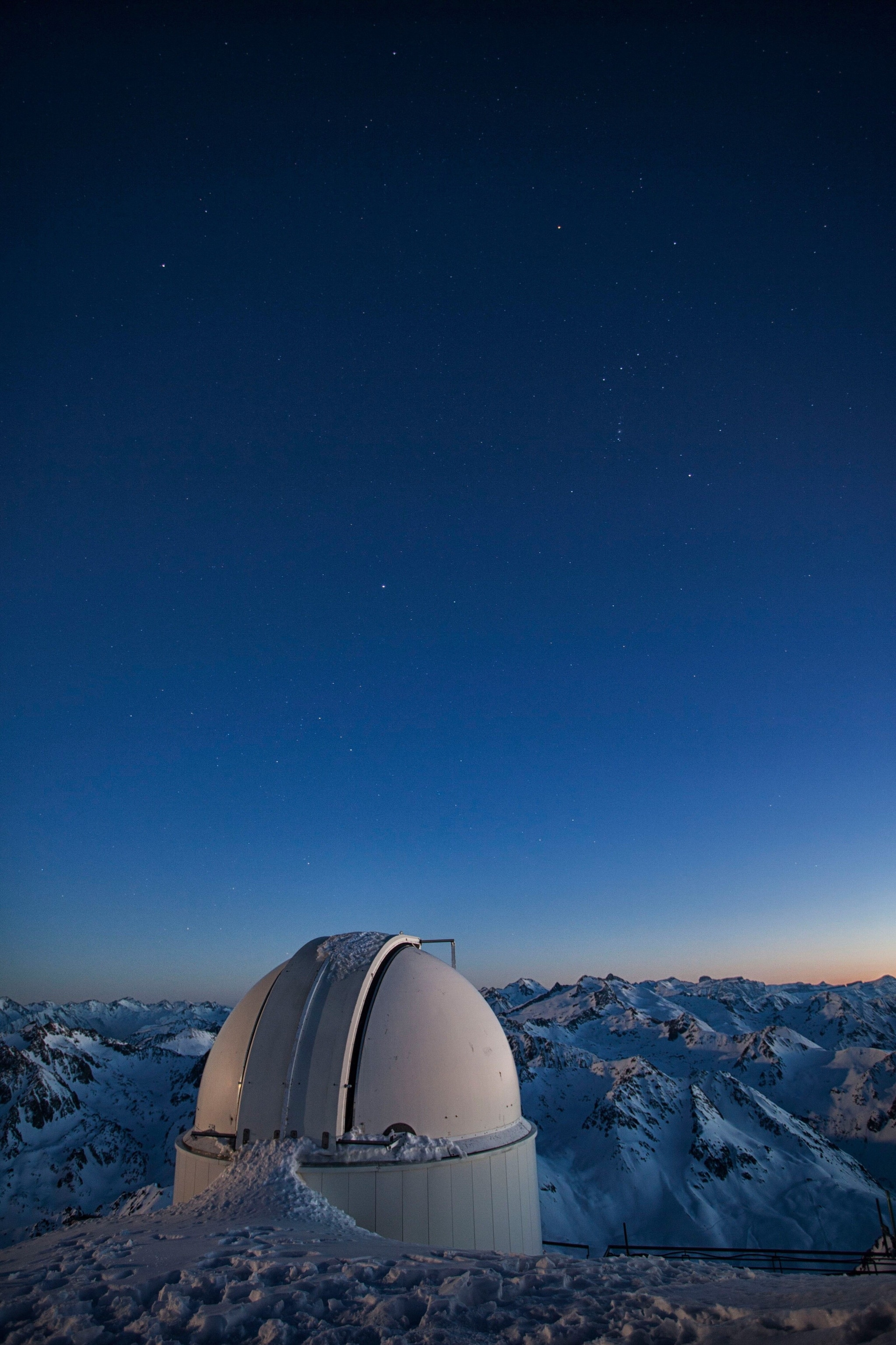
Five of the world's best dark sky spots
1. Atacama Desert, Chile
Its combination of high altitude, dry air and clear skies makes the Atacama Desert one of the best stargazing spots on the planet. The Paranal Observatory is home to the famous VLT (Very Large Telescope) and is generally the preserve of professional astronomers, but it also offers daytime tours.
2. Pic du Midi, France
Located almost 9,500ft up a mountain in the Pyrenees, the Pic du Midi observatory has been here in some form since the 1870s, and even has a whopping great asteroid named after it. Its evening experiences involve dinner, cocktails, stargazing and a bed for the night (you’d be wise to rise early for the mountain sunrise, too).
3. Aoraki MacKenzie International Dark Sky Reserve, New Zealand
The largest Dark Sky Reserve in the Southern Hemisphere can be found in the heart of New Zealand’s South Island. Stargazing activities range from astronomy tours to night-time hot pool visits, where you can marvel at the skies as you float.
4. Natural Bridges national monument, USA
Designated the world’s first International Dark Sky Park in March 2007, Utah’s Natural Bridges National Monument is famed for its stargazing potential. Photos showing the Milky Way spread behind the natural arch of Owachomo Bridge have become iconic.
5. Kiruna, Swedish Lapland
Tucked away north of the Arctic Circle, the town of Kiruna offers some of the clearest skies in Scandinavia, complete with the opportunity to gaze not just at the galaxy but at the ghostly dance of the Northern Lights. The village of Abisko, 65 miles north east, is home to the much-lauded Aurora Sky Station.
More info
Go Stargazing (for useful UK-specific information)
Light pollution map
Published in the Jan/Feb 2022 issue of National Geographic Traveller (UK)
Follow us on social media
Facebook | Twitter | Instagram
